
Theft is the act of taking another person's property or services without that person's permission or consent with the intent to deprive the rightful owner of it. The word theft is also used as a synonym or informal shorthand term for some crimes against property, such as larceny, robbery, embezzlement, extortion, blackmail, or receiving stolen property. In some jurisdictions, theft is considered to be synonymous with larceny, while in others, theft is defined more narrowly. A person who engages in theft is known as a thief.
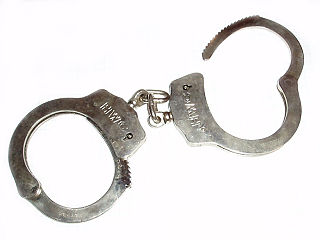
Forgery is a white-collar crime that generally refers to the false making or material alteration of a legal instrument with the specific intent to defraud. Tampering with a certain legal instrument may be forbidden by law in some jurisdictions but such an offense is not related to forgery unless the tampered legal instrument was actually used in the course of the crime to defraud another person or entity. Copies, studio replicas, and reproductions are not considered forgeries, though they may later become forgeries through knowing and willful misrepresentations.

Art theft, sometimes called artnapping, is the stealing of paintings, sculptures, or other forms of visual art from galleries, museums or other public and private locations. Stolen art is often resold or used by criminals as collateral to secure loans. Only a small percentage of stolen art is recovered—an estimated 10%. Many nations operate police squads to investigate art theft and illegal trade in stolen art and antiquities.

Vincenzo Peruggia was an Italian museum worker, artist and thief, most famous for stealing the Mona Lisa from the Louvre museum in Paris on 21 August 1911.

Stéphane Breitwieser is a French art thief and author, notorious for his art thefts between 1995 and 2001. He admitted to stealing 239 artworks and other exhibits from 172 museums while travelling around Europe and working as a waiter, an average of one theft every 15 days. The Guardian called him "arguably the world's most consistent art thief". He has also been called "one of the most prolific and successful art thieves who have ever lived", and "one of the greatest art thieves of all time". His thefts resulted in the destruction of many works of art, destroyed by his family to conceal evidence of his crimes.

Agnolo di Cosimo, usually known as Bronzino or Agnolo Bronzino, was an Italian Mannerist painter from Florence. His sobriquet, Bronzino, may refer to his relatively dark skin or reddish hair.
Eduardo de Valfierno, who posed as a marqués (marquis), was supposedly an Argentine con man who allegedly masterminded the theft of the Mona Lisa in 1911. There are serious doubts as to whether or not he existed.
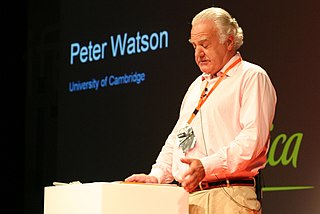
Peter Frank Patrick Watson is a British intellectual historian and former journalist, now perhaps best known for his work in the history of ideas. His journalistic work includes detailed investigations of auction houses and the international market in stolen antiquities.
The Just Judges, also called The Righteous Judges, is the lower left panel of the Ghent Altarpiece, painted by Jan van Eyck or his brother Hubert Van Eyck between 1430 and 1432. It is believed that the panel shows portraits of several contemporary figures such as Philip the Good, and possibly the artists Hubert and Jan van Eyck themselves. The panel was stolen in 1934 and has never been found.
Edward Forbes Smiley III is an American former rare map dealer and convicted art thief. He was found guilty in 2006 of stealing 97 rare maps originally valued at more than US$3 million, and sentenced to 42 months in prison.
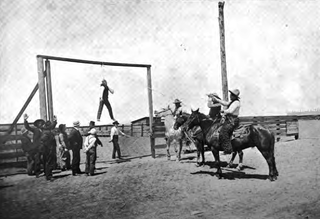
Horse theft is the crime of stealing horses. A person engaged in stealing horses is known as a horse thief. Historically, punishments were often severe for horse theft, with several cultures pronouncing the sentence of death upon actual or presumed thieves. Several societies were formed in the United States to prevent horse theft and apprehend horse thieves. However, horse theft continues to occur throughout the world, as horses are stolen for their meat, for ransom, or in disputes between their owners and other persons. Horse theft today is comparable to automobile theft, a crime punishable by felony jail time.
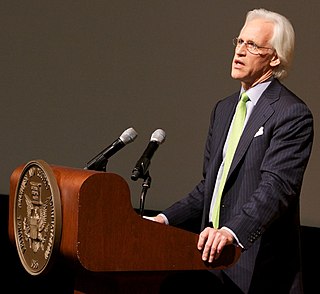
Robert Morse Edsel is an American businessman and author. He has written three non-fiction books - Rescuing Da Vinci (2006), Monuments Men: Allied Heroes, Nazi Thieves and the Greatest Treasure Hunt in History (2007); and Saving Italy (2013) - chronicling the recovery of artwork stolen by Nazi Germany during World War II. A film based on his book, The Monuments Men, directed by and starring George Clooney, was released in February 2014.

Robert KingWittman is a highly decorated former Federal Bureau of Investigation special agent who was assigned to the Philadelphia Field Division from 1988 to 2008. Having trained in art, antiques, jewelry and gem identification, Wittman served as the FBI's "top investigator and coordinator in cases involving art theft and art fraud". During his 20 years with the FBI, Wittman helped recover more than $300 million worth of stolen art and cultural property, resulting in the prosecution and conviction of numerous individuals.
ARCA's Postgraduate Certificate Program in Art Crime and Cultural Heritage Protection is a multidisciplinary postgraduate certificate program that specializes in the study of art crime and cultural property protection. The course programming consists of 10–11 weeks of academic instruction at the postgraduate level and is hosted in Amelia, Italy. The instruction covers a wide variety of theoretical and practical elements of art and heritage crime and examines art crime's interconnected world of art criminals, investigators, lawyers and art historians. The courses include comprehensive lectures and discussions exploring art crime, its nature and impact, as well as what is currently being done to mitigate it.
Art & Crime: Exploring the Dark Side of the Art World is a collection of essays edited by art historian and writer Noah Charney, published in 2009 by Praeger Press. The collection includes essays by professors, lawyers, police, security directors, archaeologists, art historians, and members of the art trade, on the subject of art crime and protection of cultural heritage. It was the first book published under the auspices of ARCA, an international non-profit think tank and research group which studies art crime. All profits from the sale of this book go directly to support ARCA's charitable activities in defense of art.
Stealing the Mystic Lamb: The True Story of the World's Most Coveted Masterpiece is a non-fiction book by art historian Noah Charney. The book was published in 2010 by PublicAffairs. It tells the story of The Ghent Altarpiece, a monumental oil painting by the Flemish master Jan van Eyck, currently on display in the cathedral of Saint Bavo, in the city of Ghent. The work is arguably the most influential painting in history, and it is also the most frequently stolen artwork of all-time. Charney's book tells the story of the artwork and the many crimes and mysteries of which it was the victim since its completion in 1432.
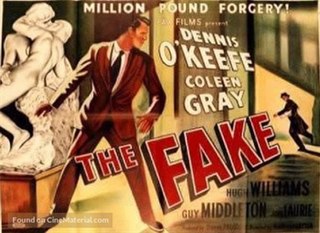
The Fake is a 1953 British crime mystery starring Dennis O'Keefe and Coleen Gray. Directed by Godfrey Grayson, it follows an American detective trying to prevent the theft of a priceless painting from the Tate Gallery in London. Hugh Williams and Guy Middleton appear in support.

John Mark Tillmann was a Canadian art thief and white supremacist who for over two decades stole over 10,000 antiques and art objects from museums, galleries, archives, and antique shops mainly in Atlantic Canada.
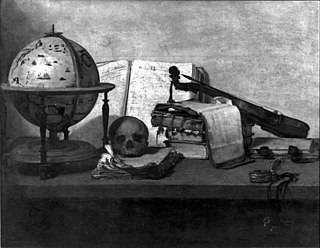
The 1972 Montreal Museum of Fine Arts robbery, sometimes called the Skylight Caper, took place very early in the morning of September 4 of that year. Three armed robbers used a skylight under repair to gain entry to the museum from its roof, tied up the three guards on duty, and left on foot with 18 paintings, including a rare Rembrandt landscape and works by Jan Brueghel the Elder, Corot, Delacroix, Rubens, and Thomas Gainsborough, as well as some figurines and jewellery. One of the Brueghels was returned by the thieves as an initiative to start ransom negotiations. None of the other paintings has ever been recovered and the robbers have never been arrested or even publicly identified, although there is at least one informal suspect.














